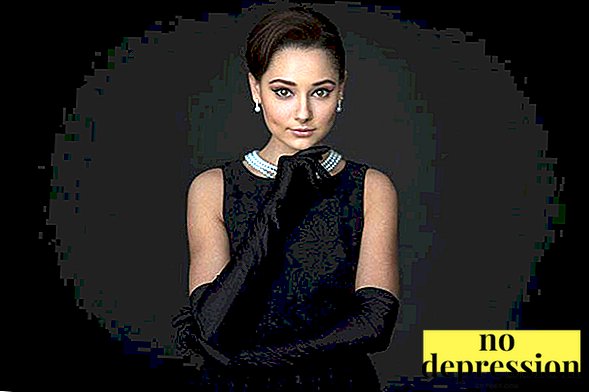What is the fear of people called? Fear of people in psychological and psychiatric practice is denoted by the term "Anthropophobia". This disorder belongs to the category of social phobias.
Its main manifestation is the desire of an anthropofoba to be as far as possible from society and to avoid contact with people by all means.
The condition is accompanied by certain symptoms and may be accompanied by panic attacks. In the absence of timely treatment, complications arise associated with the development of persistent neuroses and mental disorders.
Anthropophobia - what is it?
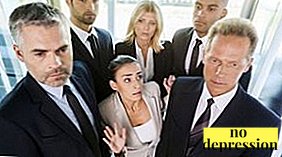
Anthropophobia is social neurosis and belongs to the category of panic disorders of the psyche.
With this disease, a person feels a desire to lead the most closed way of life and exclude any contact with other people.
Anthropophobes not dangerous for society, but the progression of mental disorder may trigger the development of additional phobias, the manifestation of which will be different from the original phobic state.
Special features phobias:
- This phobic state is equally affected by representatives of the male and female sex.
- At risk are residents of large cities (large crowds of people on the street or shopping centers can provoke a phobic state in the presence of an overly sensitive psyche).
- In most cases, the first signs of anthropophobia appear in adolescence.
What are the manifestations characterized?
Between stealth as a character trait, solitary lifestyle and anthropophobia exists a certain line.
In the first two cases, the person tries not to make new acquaintances, but he has a narrow circle of people whom he trusts.
With anthropophobia negative emotions arise in relation to to all members of society. Any contact brings anthropofoba moral and physical discomfort.
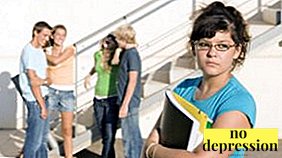
In contact with other people, the anthropophobe experiences the following. emotions:
- feeling of fear when another person tries to start a dialogue;
- while communicating with another person there is physical discomfort;
- obsessive thoughts that the interlocutor assesses the appearance of an anthropophobe or looks at him with contempt.
Types of phobias
Anthropophobia can occur in different forms.
A feeling of fear is provoked by all members of society or by people with certain qualities. For example, the object of fear can only be children or old people.
Identify the object of the phobia is not difficult. Information can provide the anthropofob itself. However, the definition of a specific object plays an important role in the selection of a phobic state therapy scheme. Algorithm classes for different cases will be different.
Varieties of phobic state:
- fear of children;
- fear of the elderly;
- fear of fat people;
 fear of communication with others;
fear of communication with others;- fear of places with large crowds of people;
- fear of people with a specific hair color;
- fear of drunk people;
- fear of pregnant women;
- fear of people with different skin color;
- fear of bald people;
- fear of men with a beard or mustache.
Why i'm afraid of people? About anthropophobia, as a kind of social phobia, in this video:
Reasons for fear
Specific factors that can provoke anthropophobia negative impact on psycho-emotional state human, but in some cases provoking factors remain unexplained.
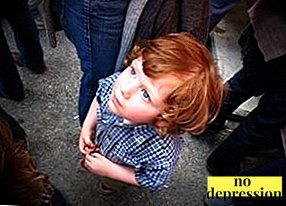 An important role is played by the peculiarities of a person’s character.
An important role is played by the peculiarities of a person’s character.
In most cases, the development of phobias is caused by excessive sensitivity of the psyche, impressionability and sensitivity.
People with such traits automatically fall at risk.
Possible causes The following factors can become anthropophobic:
- psycho-emotional upheavals associated with people suffered in childhood;
- immoral parenting practices and parental abuse;
- tendency to depression;
- too low self-esteem (as a character trait or the result of psychological trauma);
- life in adverse social conditions or a problem family;
- progression of bipolar disorders;
- excessive experience due to deception of a loved one;
- consequences of physical or moral abuse;
- speech defects and complexes associated with their presence;
- the progression of neurosis, accompanied by obsessive fears;
- some character traits (excessive impressionability, suspiciousness, etc.);
- regular psychological suppression of a person as an individual;
- the consequences of situations that traumatize the psyche and are connected with people (terrorist attacks, mass brawls, etc.);
- a dramatic change in appearance (under the influence of certain factors or targeted plastic surgery).
What is different from social phobia?
Anthropophobia and social phobia unite objects of fear. With these phobic conditions, people fears society, but in the first case any number of people is a provoking factor, and in the second - only their large accumulation.
Anthropofobs avoid communication and try to retire. People are afraid of social phobia and are a source of danger for him.
Anthropophobia can gradually complemented by social phobia.
Sociophobia and anthropophobia. Differences and how to treat? Find out from the video:
Symptoms and signs
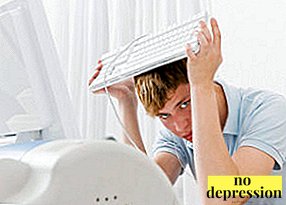
Anthropophobia is accompanied by a combination of cognitive and autonomic symptoms.
The sensation of anxiety and fear join physiological signs.
While talking to people in anthropophobes, the skin becomes paler or redder, a feeling of fever arises, the timbre of the voice changes, there is a tremor or numbness of the extremities.
In severe cases, a person may lose consciousness, feel nauseous, begin to suffocate from lack of air, or experience a tachycardia-like state.
The following may indicate the presence of anthropophobia the signs:
- feeling physical pain when touched by other people;
- anthropofobs cannot look man in the eye;
- irrational horror in the presence of the need to communicate;
- a sharp change in mood for the worse when approaching any person;
- tendency to compulsive behavior (walking “from corner to corner”, involuntary movements);
- discomfort in violation of personal space;
- the emergence of fear of people with certain external data;
- unreasonable fear that occurs when people approach.
What are the difficulties in life creates?
In the absence of timely treatment measures, anthropophobia can provoke development of persistent mental and neurotic disorders.
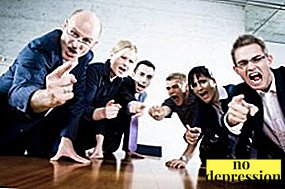 Some of the consequences provoke pathological states of the psyche, in which a person has an aggression towards others or himself (the result can be a desire to kill or suicide).
Some of the consequences provoke pathological states of the psyche, in which a person has an aggression towards others or himself (the result can be a desire to kill or suicide).
In the social life of anthropophobia provokes the following problems:
- fear of asking for help at the moment of danger (for example, in case of health problems);
- lag in learning and development;
- prolonged depressive states;
- antisocial behavior;
- difficulties with employment and self-realization;
- reduced quality of life.
How to overcome the fear of communicating with people? Technique "failure":
How to fight?
Anthropophobia does not go away on its own. This phobia implies mandatory use of psychotherapeutic techniques, and in some cases, the admission of special medicines.
Some exercises aimed at eliminating the problem can be done at home, but they are effective at the first manifestations of people's fear.
The following methods are used in the treatment of anthropophobia:
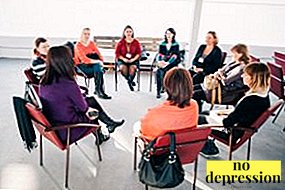 Individual classes with a psychologist (the doctor must identify the causes of the development of the phobic state, determine the degree of anthropophobic psyche damage, and select options for the correction of his psycho-emotional state).
Individual classes with a psychologist (the doctor must identify the causes of the development of the phobic state, determine the degree of anthropophobic psyche damage, and select options for the correction of his psycho-emotional state).- Cognitive-behavioral therapy (a specialist works on anthropophobe patterns, his obsessive thoughts and fears, fixes the result with the help of special exercises).
- Group classes and trainings (such techniques are aimed at developing the anthropophobic skills of communicating with people, correcting their fears and emotions under the supervision of a specialist).
- Hypnotherapy (the tendency to improve the psychoemotional state is observed after several hypnosis sessions, during the procedures the doctor interacts with the anthropophobic subconscious and makes appropriate adjustments to it).
- Drug treatment (sedatives, antidepressants, tranquilizers and remedies with a sedative effect on a plant basis are used to eliminate mental disorders, these types of medications are selected individually).
- Respiratory gymnastics, meditation, relaxation (such techniques have a beneficial effect on the psycho-emotional state of a person and develop skills to control emotions through the restoration of breathing rhythm and muscle relaxation).
Psychologist tips
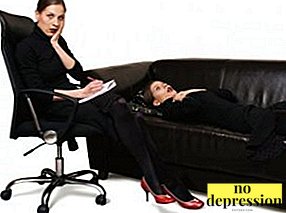
Experts recommend be sure to seek help from doctors if you suspect a phobia.
Anthropophobia responds well to treatment, but the degree of mental damage plays a key role.
The main stage of the beginning of the struggle with the phobic state is identifying the object of fear and the correction of its own attitude to it.
You can eliminate the initial signs of a phobia by regular exercises (classes in front of a mirror, using self-suggestion methods and deliberately creating certain situations).
What to do if you are afraid:
- Crowds of people (self-correction of the fear of large crowds of people is accompanied by difficulties, such a phobia implies a mandatory appeal to a specialist, as an exercise, you can use auto-training techniques, options for “shock therapy” or gradually teaching yourself to be in society).
- Unfamiliar people (A good way to overcome the fear of strangers is regular training, you can try to make phone calls more often, being interested in the working hours of organizations, finding out the range of services offered, training yourself to greet sellers, janitors and other people meeting in everyday life)
- Fat people (working on your emotions helps to cope with the fear of obese people, you can reduce your fear, for example, by creating associations with good fat men from cartoons or films, studying information about people who have made significant contributions to science, medicine and other fields, but differing in this weight).
With timely identification of signs of anthropophobia, forecasts will be favorable. Phobia responds well to correction and is completely eliminated by special psychotherapeutic methods.
Self-treatment phobic state in the running form not only does not lead to the expected results, but also provokes complications.
Fear of people. Why is there and how to get rid of? Exercises:

 fear of communication with others;
fear of communication with others; Individual classes with a psychologist (the doctor must identify the causes of the development of the phobic state, determine the degree of anthropophobic psyche damage, and select options for the correction of his psycho-emotional state).
Individual classes with a psychologist (the doctor must identify the causes of the development of the phobic state, determine the degree of anthropophobic psyche damage, and select options for the correction of his psycho-emotional state).

